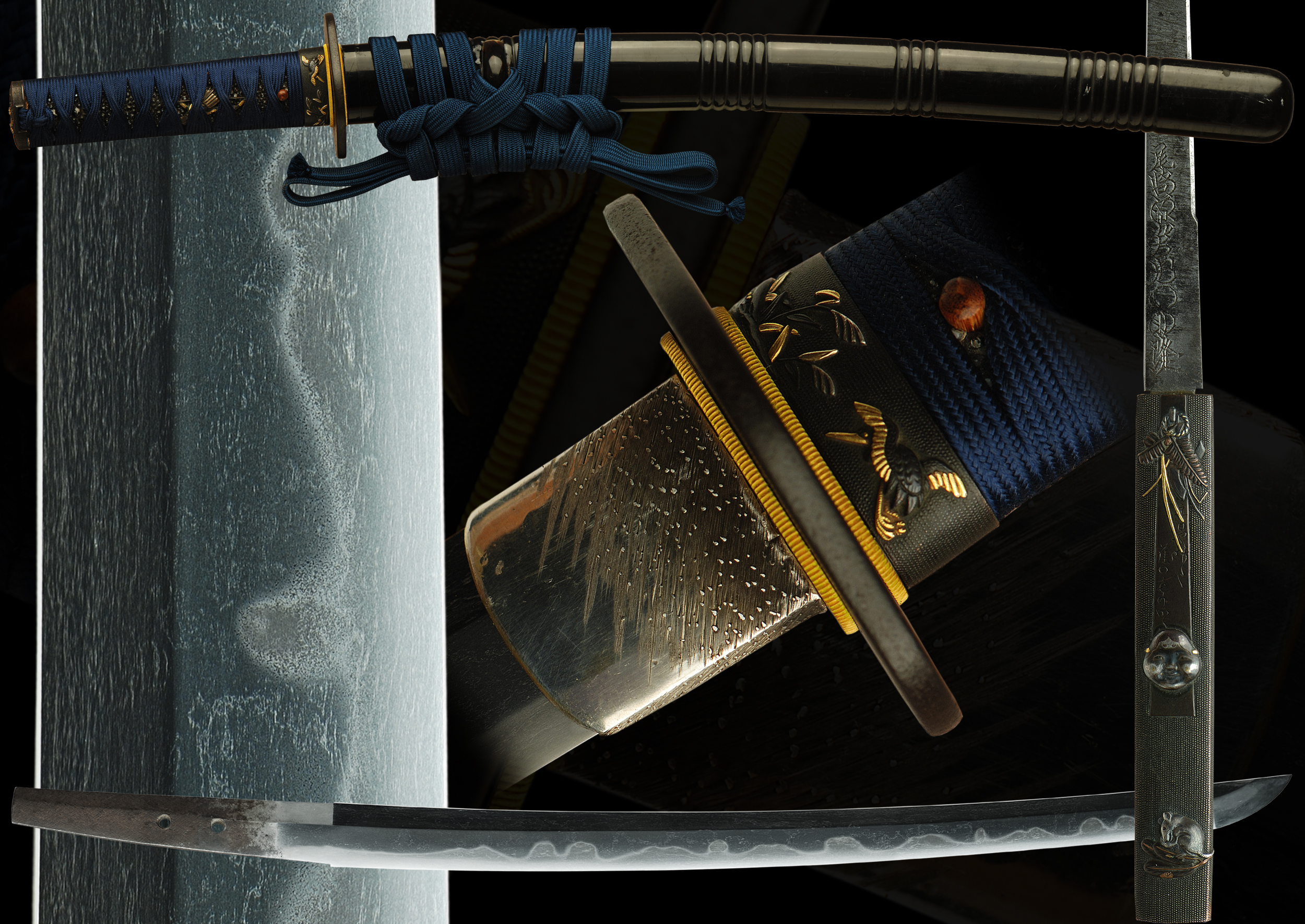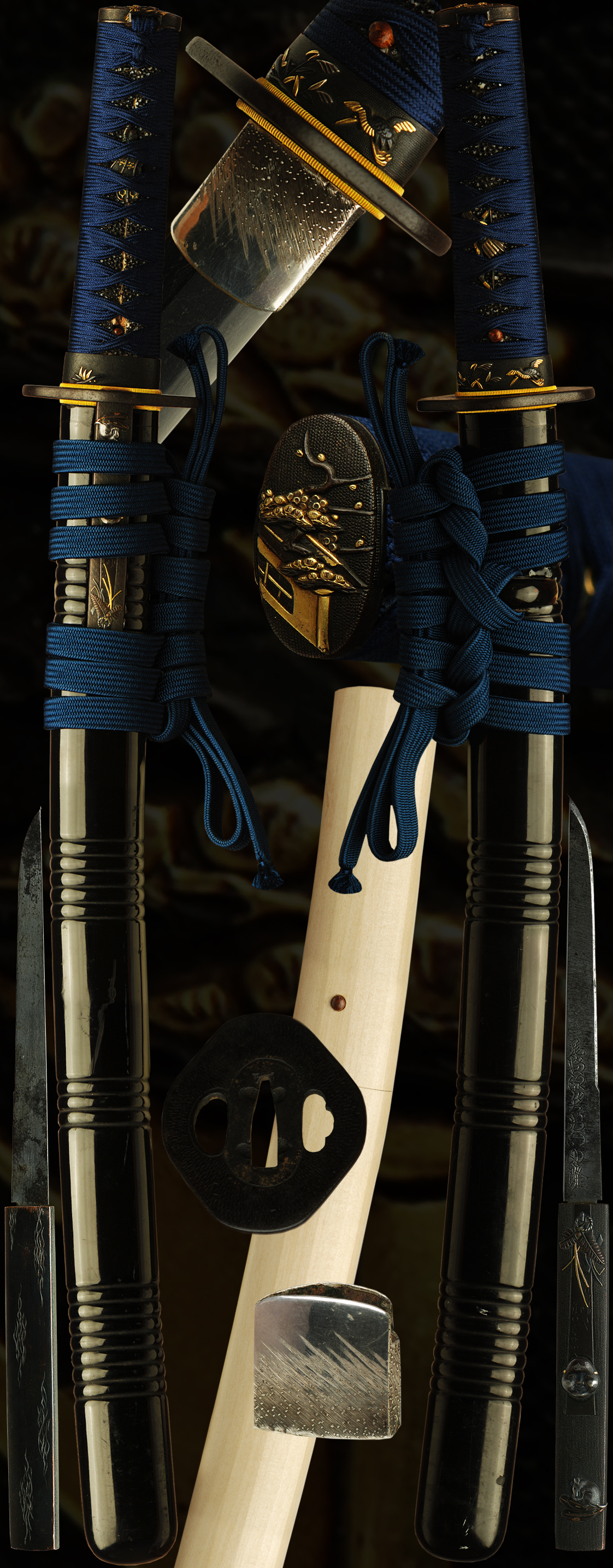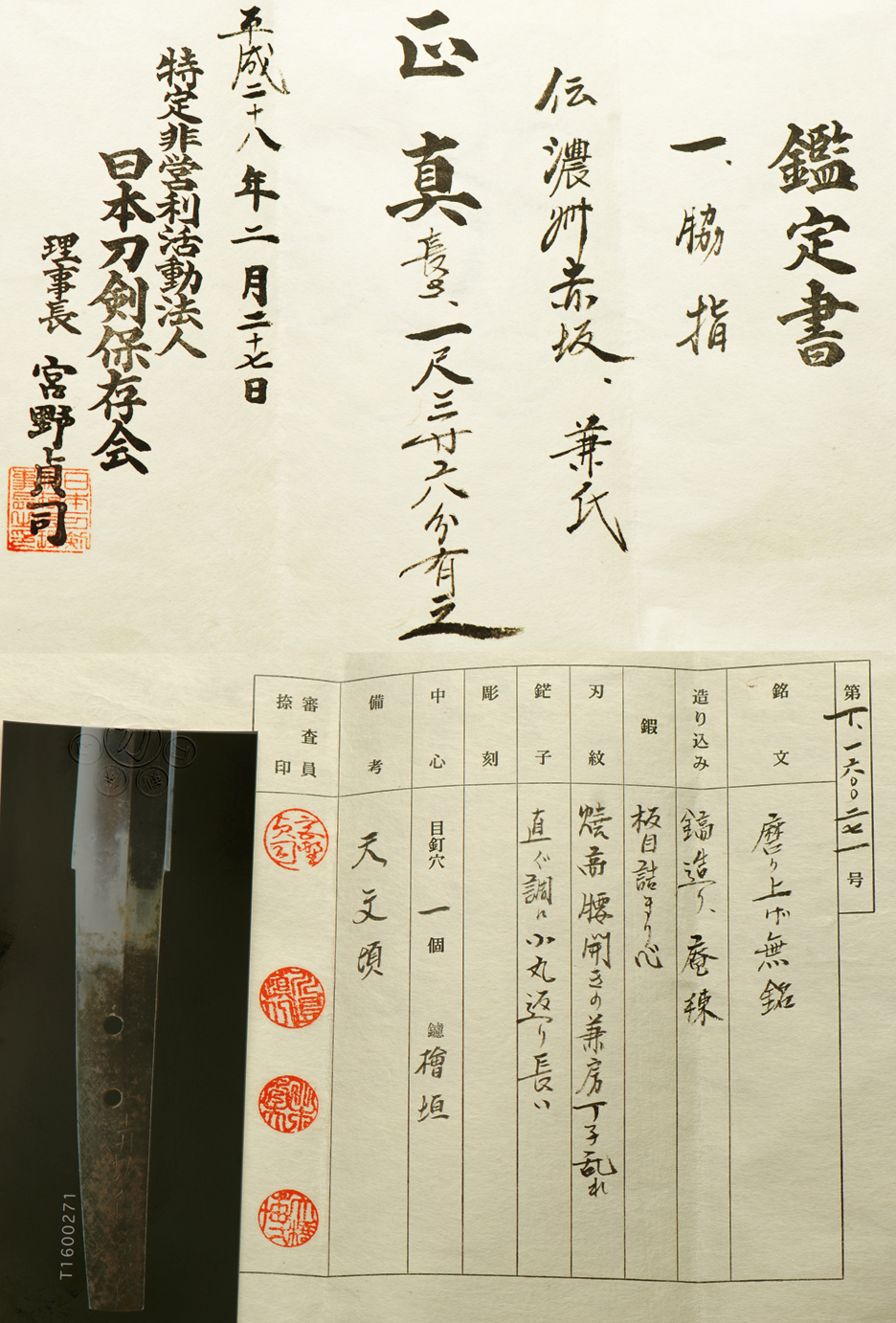More than likely a descendant of this smith:
KANEUJI (兼氏), Tenbun , (1532-1555), Mino – “Kaneuji” (兼氏), “Kaneuji saku” (兼氏作), “Nōshū-jū Kaneuji” (濃州住兼氏), Akasaka school, according to tradition this Tenbun-era Kaneuji was the son or the grandson of a Kaneuji who moved from Naoe to Akasaka, wazamono, chū-jō-saku
An exquisite late koto blade signed Kaneuji. The Kaneuji line of swordsmiths are famous and date back to the koto era. They were known to make fine quality swords that cut very well. This sword measures in at 16 1/4″. This blade is a beautiful example of a late koto sword with great activity and a wonderful hada covered in ji-nie. The hamon is a vibrant gunome-midare filled with sunagashi, kinsuji and ko-nie abounds and there are small balls of temper lifting off the hamon. The hada is an active itame O-mokume mix with flowing itame throughout the blade. There is masame in the shinogi-ji. Chikei can be seen all over as well as being peppered with ji-nie. The blade is signed and papered to Kane Uji and given an approximate date of 1532-1555. The boshi is maru with kinsuji. The hada has a perfect burl effect and a pleasure to behold. The koshirae is fitted with a high gloss semi-ribbed black lacquer finished saya. a shirasaya also accompanies this blade. The ito and Sageo are a matching blue color to accentuate the mounts. The fuchi/kashira are a large pair of shakudo and gold birds in flight. there is an interesting kodzuka and ko-gatana also with a mouse on leaves. The tsuba is shakudo with a semi-squared off mimi-gata lobed in a semi-diamond shape and may date back to the late koto or edo era. A beautifully finished Gold washed pair of seppa and silver foiled rain splash pattern habaki to complete the Koshirae for this wonderful Shinogi-Zukiri style sword. A treasure in it’s own right.
AN EXCERPT FROM:
Yamanaka’s Nihonto Newsletter:General: No specific Mino section which is in the format of the other books. Instead, In Vol II, two issues were dedicated to discussing the specific characteristics of the key schools and smiths. The key smiths and schools are as follows: Kaneuji and his school, Naoe Shizu (Kaneuji’s followers), Kaneshige (worked in Soshu and Mino traditions), Zenjo School (founded by Kaneyoshi who came from Yamato province) , Kanemoto School, Kanesada School (famous 2nd generation “No-sada”), Akasaka Senjuin (Yamato province, Senjuin School, founder is Kuninaga who moved to Mino province, Hachiya School (founded by Kanesada, different kanji than other “No-sada” group.
Kaneuji:
Hada: Steel grain will show up clearly, much uruoi, ko-mokume with o-hada mixed together, shinogi-ji will have masame, some muneyaki
Hamon: narrow, worked in nie, small designs of gunome-midare w/nie kuzure, rough nie, inazuma, sunagashi in small places, tagariba mixed in places, midare will be small,
Boshi: shallow in midare-komi ending in yakizume or slight kaeri, kaen is seen on some works.
Naoe Shizu work resembles the 1st and 2nd Kaneuji work, with hamon becoming wider.
- Mei: Akasaka-ju Kaneuji
- Date: Tenbun (天文, 1532-1555)
- Nagasa: 16-1/4 inches
- Sori: 9.0 mm
- Width at the ha-machi: 29.1 mm
- Width at the yokote: 21.9 mm
- Thickness at the mune-machi: 6.0 mm
- Construction: Shinogi zukuri
- Mune: Iori
- Nakago: Ubu
- Kitae: Itame/mokume
- Hamon: Midare Gunome
- Boshi: Maru
- Condition: Good polish
Email us if your interested in this item and remember to include the order number for this item: fss-750.
kantei-sho (鑑定書) – Appraisal wakizashi (脇指)
Den Nôshû Akasaka, Kaneuji (伝濃州赤坂、兼氏) shôshin (正真) – Authentic
nagasa 1 shaku 3 sun 6 bu kore ari (長さ一尺三寸六分有之) – Blade length ~ 41.2 cm Heisei 28 nen 2 gatsu 27 nichi (平成二十八年二月十八日) – February 28th 2016
Non Profit Organization (特定非営利活動法人)
Nihon Tôken Hozon Kai (日本刀剣保存会) – NTHK
Board Chairman (理事長): Miyano Teiji (宮野貞司)
No T1600271
meibun (銘文) – Signature:Nôshû Akasaka, Kaneuji
tsukurikomi (造り込み) – Shape: shinogi-zukuri,
kitae (鍛) – Forging: rather dense itame
hamon (刃紋) – Hardening: wide koshi-no-hiraita Kenbô-chôji-midare
bôshi (鋩子) – Hardening in tip: sugu-chô with a long ko-maru-kaeri
chôkoku (彫刻) – Engravings:
nakago (中心) – Tang: mekugi-ana (目釘穴) 1, yasurime (鑢):
higaki bikô (備考) – Remarks: around Tenbun (天文, 1532-1555)
shinsa’in natsu’in (審査員捺印) – Seals of Judges: 4 seals
For Sale

























